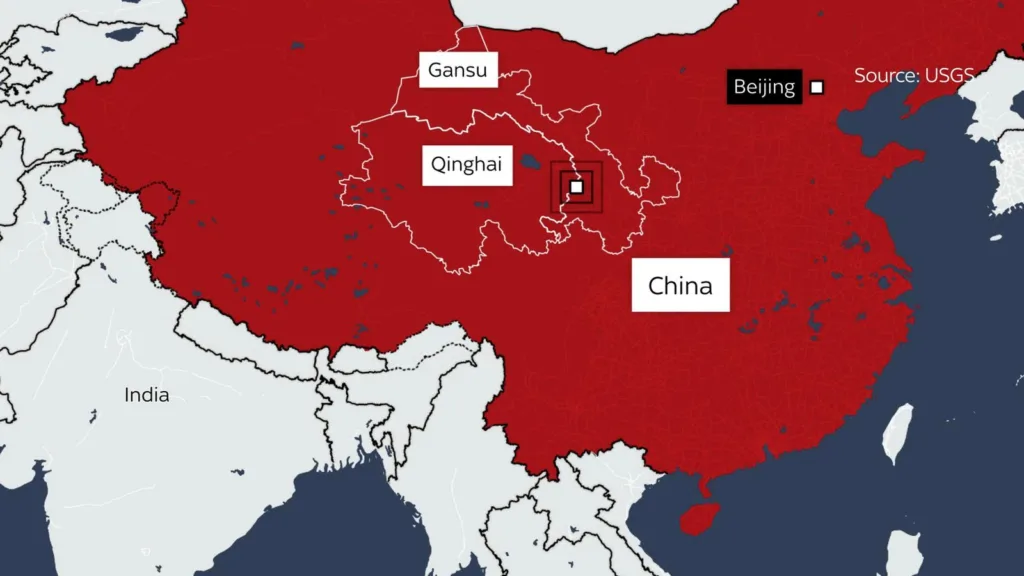China earthquake: On Wednesday, rescue and relief activities in China’s northwest earthquake-affected provinces continued with 131 deaths.
The epicenter of Monday’s 6.2-magnitude earthquake, which shook China at approximately 11:59 p.m. local time (1559 GMT), was a township in Gansu province’s Jishishan autonomous county. The provincial capital of Lanzhou is approximately 101 kilometers, or 63 miles, away from the township.
When the earthquake struck, many individuals were sleeping in the crowded areas.
According to the Xinhua news agency, up to 113 deaths were reported in Gansu, and 18 more deaths in Qinghai province were verified.
Read More
Only seventy-four of the almost four thousand people who had been evacuated had been successfully rescued as of Tuesday night.
Over 780 people were injured as a result of the devastating earthquake, and some of them are still in critical condition in hospitals.
Since the 6.5-magnitude earthquake that rocked Ludian County in Southwest Yunnan Province in 2014, this earthquake is the deadliest to have struck China since then. It was responsible for the deaths of at least 617 people and the disappearance of 112 more.
It was stated by witnesses that a large number of homes, roads, and other components of the infrastructure were destroyed. Additionally, it was reported that certain districts experienced power and water disruptions.
In accordance with the statements made by the local authorities, all of the roads that lead out of the communities that were most badly impacted by the earthquake are now accessible to vehicles.
Hundreds of rescue workers are braving a cold wave and periodic tremors in an effort to save survivors, according to the news agency. The temperature has plummeted to 10 degrees Celsius (14 degrees Fahrenheit), during which time the temperature has dropped.
In addition to providing food, clothing, tents, stoves, and folding beds, relief workers continued to provide the affected populace with provisions.
In order to carry out relief and rescue operations in the areas that have been damaged, China is making use of unmanned aerial vehicles and satellites that are capable of remote sensing.
Share this content:

